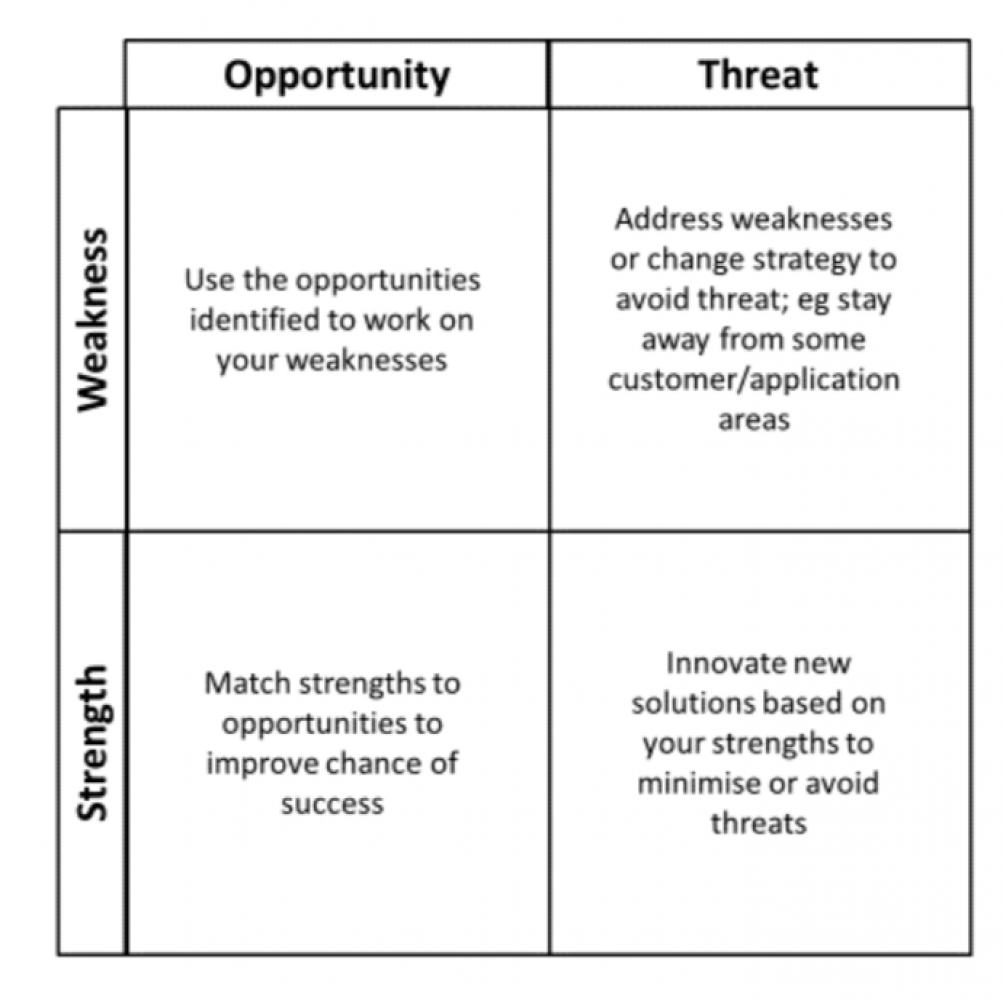SWOT Analysis
SWOT stands for Strengths, Weaknesses, Opportunities, and Threats. It helps you to explore where you stand compared to your competition, and how you should position yourself in your target markets.
Description
SWOT analysis is usually carried out on a 2 x 2 matrix.
- Strengths and weaknesses are internal to your organisation. They are things you can influence.
- Opportunities and threats are external. You can’t control them and must adapt to them.
- Strengths and opportunities are positive factors you want to take advantage of.
- Weaknesses and threats are negative factors; to be minimised and avoided.
Where Do You Use the Tool?
SWOT analysis is usually done as a group or team exercise, but you can get individuals to fill in the SWOT template and combine suggestions. It can be done by an individual, but it is always useful to get some other inputs so that your own prejudices don’t dominate.
The best places to use SWOT analysis are in understanding market context in assessing need, and in reviewing your own current capabilities.
It is not directly useful in developing your offer.
How to Use the Tool
1. Brainstorm factors in each category
There are lists of trigger questions available to help you cover all the key factors that might be important. For example:
- Strengths:
- What do you do well?
- What can you do that others can’t?
- Why do customers choose you?
- Weaknesses:
- What do you struggle with?
- What can’t you do that others can?
- Why do your target customers choose others?
- Opportunities:
- Are changes in regulation forcing new solutions that you can deliver?
- Are there changes in lifestyles and consumer preferences you can exploit?
- Is new technology changing the customer wants and needs?
- Threats:
- Will new solutions and new market entrants threaten your profit margin
- Is your target audience declining or becoming poorer?
- Is a new default standard being created that you can’t deliver?
NB – You need to be honest in your strengths and weaknesses. We tend to overstate our strengths and underestimate or ignore our weaknesses. Every business has weaknesses.
2. Select the factors that are most important for your business
3. Develop strategies and action plans that respond to your analysis
How are you going to make the most of your strengths and minimise your weaknesses? How can you seize the opportunities, whilst defending against the threats?
Use the 2 x 2 matrix gain to combine the four categories of your analysis:
- Weakness — Opportunity: remove the weakness to access the opportunity
- Weakness — Threat: remove the weakness or change the business target to avoid the threat
- Strength — Opportunity: match strengths to the opportunity to maximise chance of success
- Strength — Threat: confront the threat using your strengths

Other tools to try
Further Information
BPlans: SWOT Analysis Challenge Day 1: How to Identify Strengths
[Some text explaining why this link is useful]